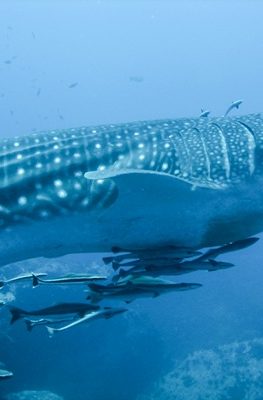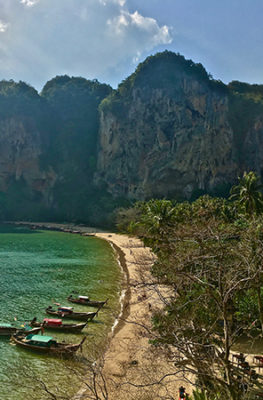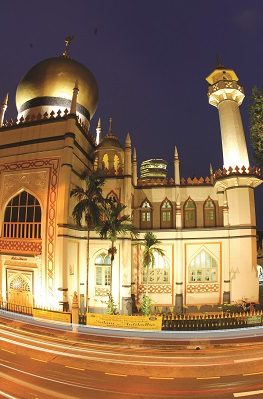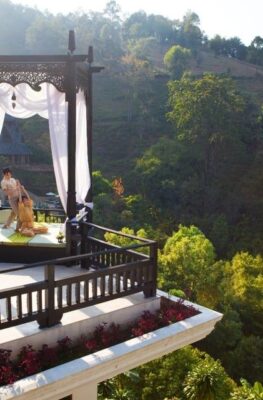Published on December 7, 2009
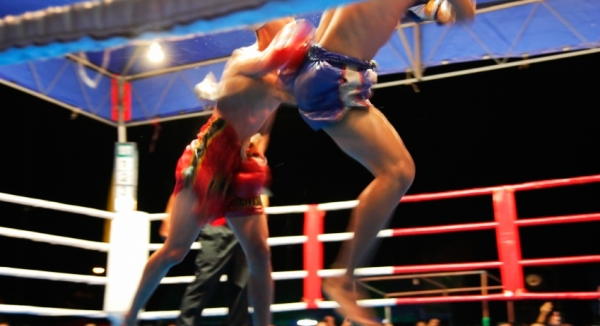
Ask most people why they travel to Thailand and they’re likely to reel off a list of reasons, ranging from swimming in azure seas and relaxing on pristine beaches to feasting on spicy street food and indulging in luxurious spa treatments. Getting punched in the head, kneed in the stomach and thrown on the ground is not the response you expect to hear, but an increasing number of people are traveling to these distant shores to endure such trials while studying the ancient combative art of Muay Thai.
Renowned for its arsenal of punishing knee- and elbow-strikes, powerful kicks and vice-like clinches, which are bolstered by a pragmatic approach to combat, this no-nonsense fighting method has become the system of choice for many martial artists around the world.
As with most fighting systems, the true origins of Muay Thai remain shrouded in legend and mystery, but the art certainly dates back several centuries to when it surfaced in the Siamese military. It is also closely related to Krabi-Krabong, a traditional weapons system that makes use of knife, sword and axe, as well as a diverse array of farming implements. Thai boxing was essentially developed as an empty-hand back up for a soldier who had the misfortune of losing his weapon or being disarmed by an opponent during battle.
Pragmatism still underpins Muay Thai today. It is characterized for being simple and effective and based on using a few techniques to good effect in any situation, rather than trying to master hundreds of scenario-based applications, which makes it quick to learn. There are a staggering 60,000 registered fighters, or nak muay, and thousands of gyms across the country. But despite Muay Thai’s pervasiveness, until fairly recently it was quite difficult to find gyms that would train tourists. The main reason being, that the camps are professional businesses and fighters are trained to compete and win, so they can earn kudos and cash for their respective gyms – teaching enthusiasts and amateurs did not bring the same rewards.
These days the industry has significantly diversified and there are a number of camps in most urban centers and tourist destinations that are geared towards training foreigners and tourists – many now also provide accommodation and other facilities including spas, massage, yoga and meditation. People of all ages and skill levels are generally welcome, from first time novices to hardened pros training for prizefights.
Most schools hire former professional fighters as trainers, who despite their youthful looks will likely have more than 100 fights under their belt before they hit 18, and upwards of 200 by the time they retire in their mid-20s.
Costs vary, but are significantly cheaper than anything available in the West with prices ranging from 3,000 (about US$85) for a two day intensive group training session to about 1,400 baht for private one-on-one tuition.
Despite its well-earned reputation as a brutally effective way of dispatching enemies, respect is an essential part of the Muay Thai spirit and friendly paternal relationship exists between teacher and student.
While the training is grueling and can be very demanding, comprising two three-hour sessions every day at its most intense, physical conditioning doesn’t enter the realm of fantasy portrayed in Jean-Claude Van Damme’s 1988 martial arts classic Kickboxer.
If there’s a palm tree at the gym it will be for sprawling under after a hard workout, not for felling with your shins.
Where to train:
BANGKOK
CHIANG MAI
PATTAYA
PHUKET
Tiger Muay Thai & Mixed Martial Arts
Rawai Muay Thai & Fitness Camp
Greg has lived in Bangkok for eight years. He recently updated the latest Insight Guides: Thailand’s Beaches and Islands and writes regularly for Travel + Leisure Southeast Asia, Bangkok Post, Business Times, South China Morning Post and Fah Thai. See thegreglowe.com for more info.



